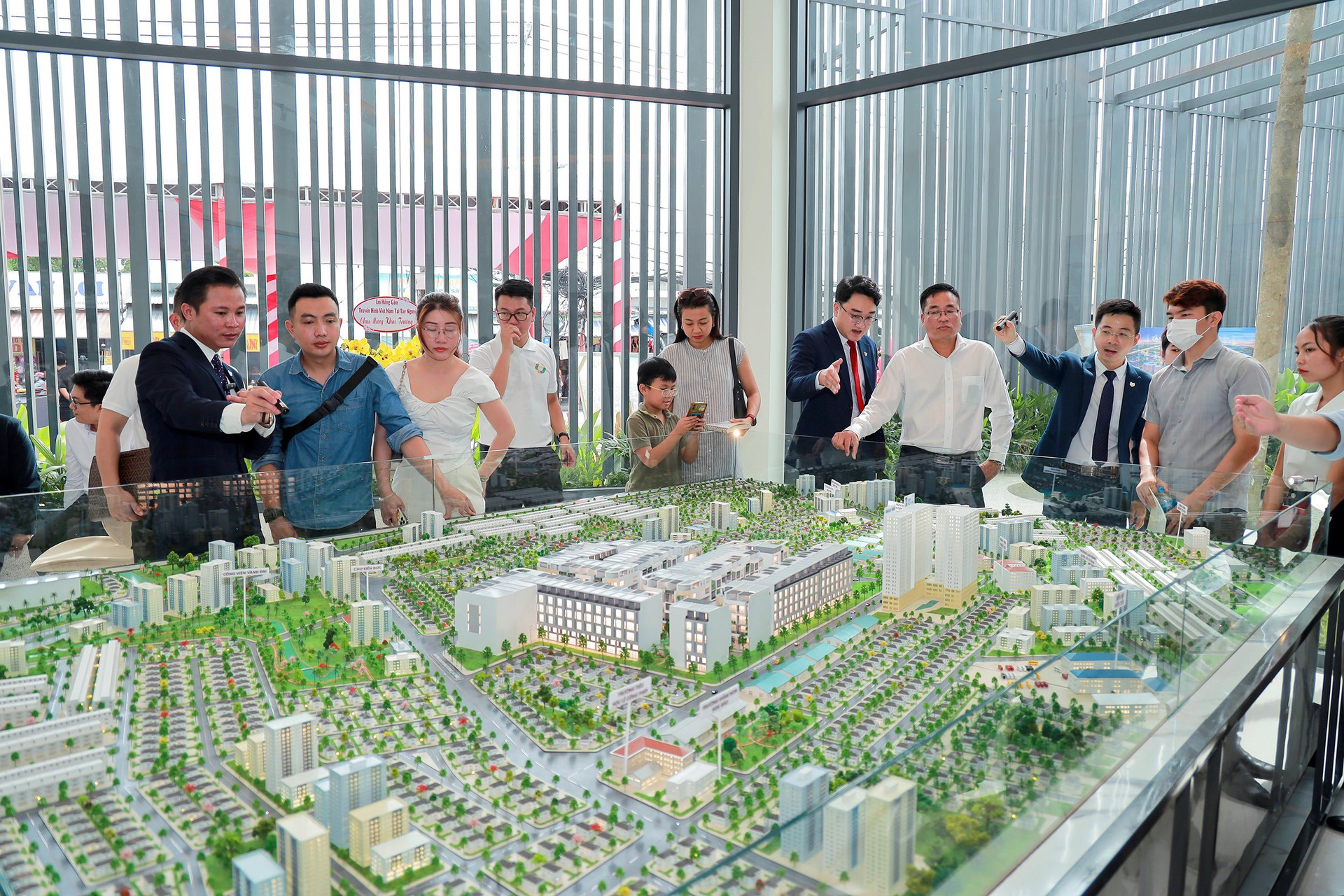“Real Estate Shines Brighter This Year…”
In 2024, the real estate market is experiencing a positive and optimistic shift compared to the previous year. It is like transitioning from a dimly lit area to a brighter one. While the real estate market in 2023 was uncertain and unpredictable, this year, the picture is becoming clearer.
Starting from the second quarter of 2024, there are signals of a positive market trend. However, the real estate market is still cautious and unlikely to experience an explosive boom like before due to ongoing global uncertainties.
So, what makes me confident that the real estate market will shine brighter in 2024?
Firstly, the market has undergone significant filtering. All participants, including investors, developers, homebuyers, and other stakeholders, have had ample time to assess and adapt to the changing market conditions.
Secondly, the policy framework for the real estate market in 2024 has become more defined. Stakeholders now have a clearer understanding of the future direction, which brings more confidence to the market.
Thirdly, potential homebuyers have gathered substantial data about real estate, enabling them to make informed decisions.
Moreover, the attractive financing policies with low-interest rates for real estate purchases are attracting more participants to the market.

To seize opportunities in this market phase, real estate businesses need to adapt and innovate their operations. The market now operates with more transparency, professionalism, and sustainability compared to the past. These changes reflect the relentless efforts from government agencies to regulate the real estate industry effectively. The amended and updated laws will serve as a crucial foundation for the future development of the real estate sector.
For DKRA Group, as a real estate enterprise, it is essential to proactively embrace comprehensive innovations and equip ourselves with the necessary capabilities to adapt quickly to the evolving real estate market.
In 2023, we initiated a complete restructuring of our business model, which includes distinct strategic service divisions. This comprehensive strategic framework is scheduled to be completed by June 2024. The three main service divisions of DKRA Group are DKRA Consulting – Research & Development Consulting, DKRA Realty – Marketing & Distribution, and DKRA Living – Management & Operation. These strategic service divisions will empower DKRA Group during the upcoming market phase.
Each service division will be diversified to meet the market’s essential requirements. For example, DKRA Consulting – Research & Development Consulting will expand its services beyond its previous scope. It will become a crucial division and the backbone of DKRA Group by providing comprehensive solutions to investors, such as market research, project development ideation, investment profitability calculations, legal procedure consulting, real estate finance, and sales-related solutions. Other service divisions will also expand, innovate, and enhance their offerings to meet the future market demands, aiming to optimize costs and deliver high efficiency for the investors.
As an observer of the real estate market’s fluctuations and challenges, I believe that real estate businesses must set clear long-term development goals during this phase. This is the time for companies to gain momentum cautiously and prioritize sustainable growth.
Undoubtedly, the real estate sector has faced significant challenges recently. DKRA Group has also been part of this challenging period. However, even in these difficult times, we believe in the emerging opportunities. With appropriate solutions, DKRA Group can transform all challenges into opportunities as the market enters the recovery phase.

Has consumer confidence truly recovered, allowing businesses to engage in the market actively?
It is crucial to understand that consumer confidence in the real estate market has not diminished entirely but rather shifted to seek the right opportunities. In recent times, potential buyers have spent more time observing and researching rather than losing faith in the market.
After thorough scrutiny and research on products, project legalities, developers’ capabilities, and sales policies, customers can compare and make informed decisions. Despite the challenging market conditions, projects that meet favorable criteria, such as quality products, attractive sales policies, and reputable developers, still experience good liquidity. The confidence of buyers is cumulative and has a positive ripple effect. When projects meet the buyers’ beneficial factors, demand increases. Real estate businesses need to create value propositions that instill confidence in buyers.
Although advantages exist for real estate in this market phase, overall demand is still slow compared to the potential benefits. The real estate market caters to various customer segments with different preferences and purchasing power. Naturally, properties with proper legalities in secondary markets and attractive prices see willing buyers.
Investors with specific tastes and strong financial capabilities readily purchase properties that align with their preferences. Some investors, despite having sufficient capital, refrain from investing if the properties do not match their preferences. For genuine homebuyers, having guaranteed financial capability and secure living environments are their primary considerations. On the other hand, some homebuyers have high demands but lack the required financial resources; thus, they wait for favorable policies and incentives.
Notably, the real estate market is currently segmented into different customer groups with different tastes. The market must cater to the diverse target groups’ needs, financial capabilities, and practical requirements. The trading signals are gradually improving, but it does not imply that the real estate market is shining brightly for the entire market. Some segments show bright spots, while others still face considerable challenges.
So, which segments or regions offer the greatest market opportunities?
In recent years, the Eastern part of Ho Chi Minh City (including Thu Duc City, Binh Duong, Dong Nai, Ba Ria – Vung Tau) has remained a pivotal area in terms of supply and demand. However, the market inclination is shifting towards the Western part of Ho Chi Minh City (including Long An) in 2024. Numerous real estate projects are set to enter the Long An market. Therefore, while the real estate market in the Eastern part of Ho Chi Minh City continues to thrive, the Western part will emerge as a new bright spot from 2024 onwards.
In terms of segments, land plots and land-attached houses remain as long-term asset storage products that attract significant attention. However, the supply of these segments is becoming increasingly scarce, while demand and value continue to rise.
Affordable apartments priced around 2-3 billion VND per unit also offer substantial opportunities in the near future. This product type satisfies both living needs (residence or rental) and caters to various customer segments.
Currently, end-users still account for a high proportion of transactions. Towards the end of the year, market dynamics may shift as investors return to the market. When the market becomes more active, more investors will participate alongside end-users.
In conclusion, the real estate market in 2024 offers clear opportunities. At the beginning of the year, many companies are actively launching sales and introducing projects. Some projects have achieved significant booking and deposit numbers. However, it is essential to note that the real estate market is cautious and has not yet fully boomed.
Thank you for sharing your insights!
